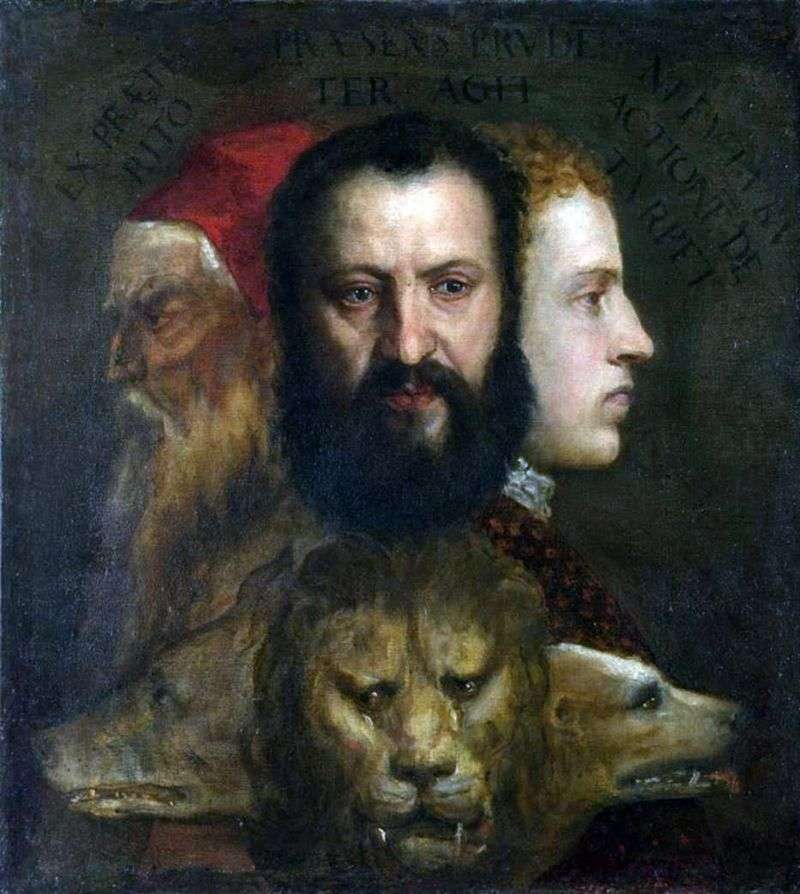
“Allegory of prudence” was written in oil in 1565-1570. The authorship is attributed to the Italian painter Titian.
At work, there are three heads of animals looking in different directions, under three human heads. In the analysis, the picture is interpreted on several “levels”.
At this level, human youth, maturity and old age are represented. Perhaps, the heads symbolize a broader concept of the time itself, depict the past, the present and the future. This theme is repeated in the heads of animals, which, according to some traditions, are related to the corresponding time periods.
Another level, thanks to which the picture has acquired its present name, is based on a barely visible signature, which reads: “PR PRESENTER PRITAINER AGIT / NE FUTURA ACTIONE DETURPET”. Supposes that the picture is connected in some way with the advent of Tizian’s youth, and the moment when the artist thought about paying for his thoughtless deeds.
Thus, the picture acts as a visual adviser from three generations, calling to act wisely and circumspectly, transferring this experience to its descendants.
However, more recently, the picture was explained quite differently. Instead of the “allegory of prudence,” the theme of the work was defined as “sin and repentance.” From this point of view Titian shows the inability to act in adolescence and adulthood prudently and prudently, that in old age leads to regret and sadness.
In this plane, the picture was interpreted as an assertion of prudence that comes in old age, with experience. Such an interpretation refutes the view that older people pose a danger to the fine arts.
There is a version that the picture depicts Titian and his two assistants. It does not contradict the above interpretations.
